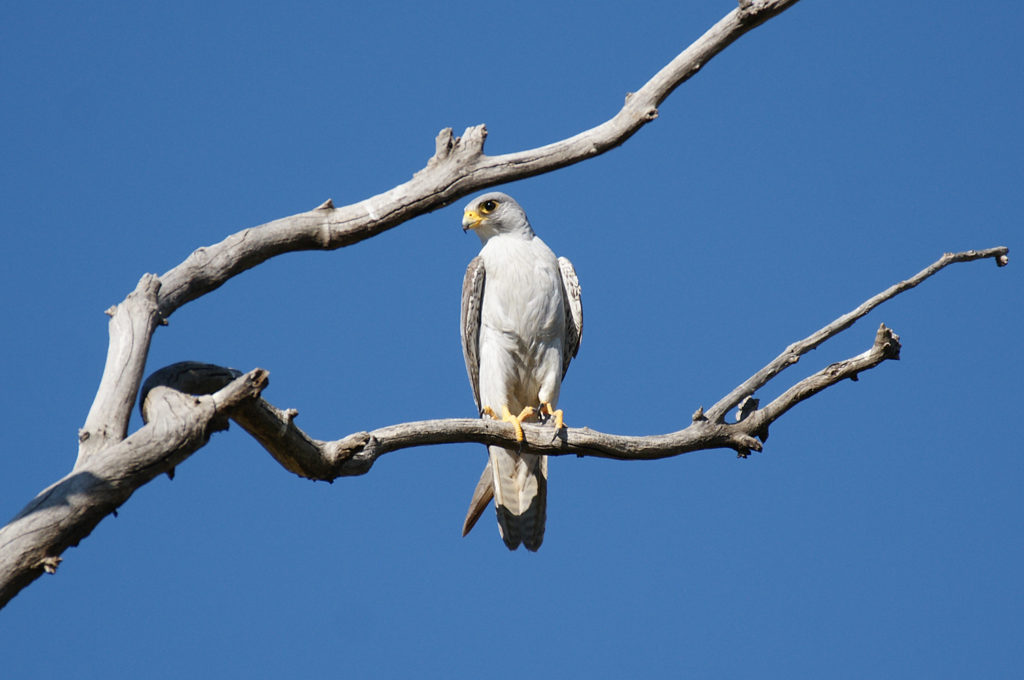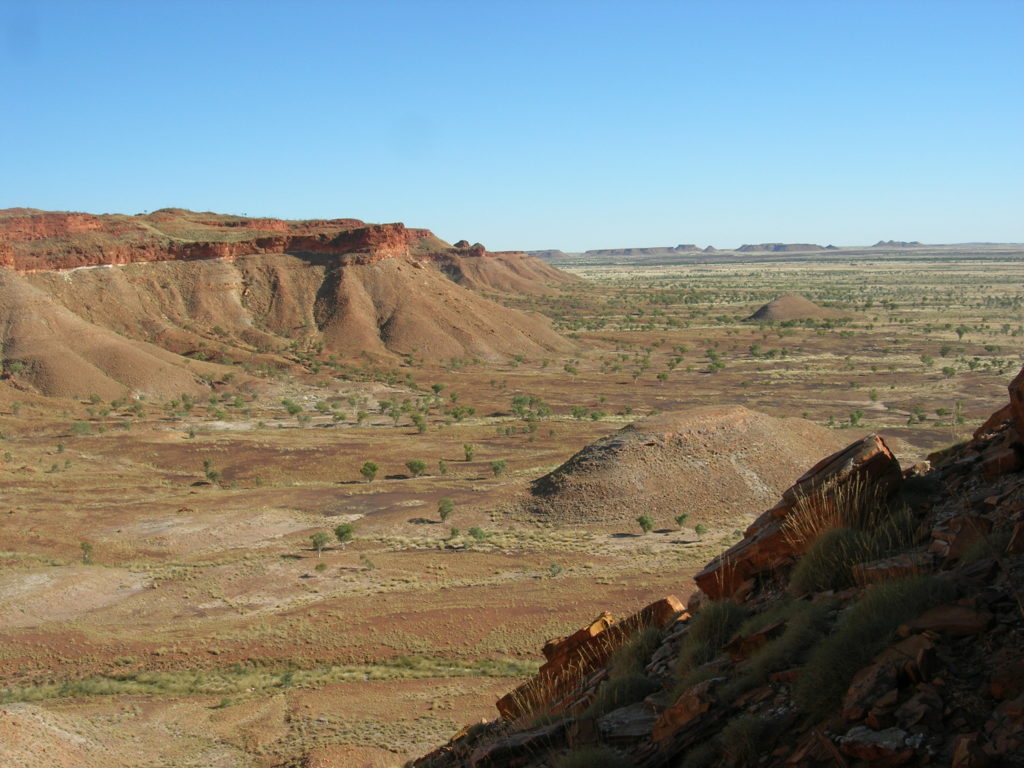Biodiversity matters
The rare and elusive Grey Falcon (Falco hypoleucos) is an apex predator that hunts in the arid/semi-arid desert regions of central Australia, feeding almost exclusively on other birds snatched in mid-flight.
With population numbers estimated at less than 1,000 individuals, the Grey Falcon could be among the rarest five Falco species in the world and is certainly the rarest of the six Falco species resident in Australia.

The elusive Grey Falcon (Falco hypoleucos) is among Australia’s rarest raptors (image courtesy Pete Nunn).
Being so rare means many questions about the Grey Falcon remain unanswered and CSIRO senior research scientist Dr Chris Pavey says one of the key reasons for this lack of data derives from the bird’s preference for remote and harsh environments where few people live.
Chris is a wildlife ecologist who focuses on understanding habitat requirements of species and understanding species interactions and how these influence food webs.
Chris has more than 25 years’ experience with on-ground environmental management projects focussing on recovering threatened species, assessing potential impacts, and managing species and ecosystems in the face of environmental disturbance.
Biodiversity research critical for understanding impacts
With a particular interest in deserts and desert ecology, Chris has made research contributions not only to the Grey Falcon, but also to biodiversity research in arid regions of Australia in relation to resource development – a potential source of environmental disturbance.
Along with PhD student Jonny Schoenjahn, Chris authored a literature review Ecology of the Grey Falcon Falco hypoleucos – current and required knowledge which identified questions around population counts and ecology.
Geological and Bioregional Assessment
Chris is also one of many scientists who worked on the Federal Government’s Geological and Bioregional Assessment (GBA) Program, which uses causal networks to assess the regional-scale risks of unconventional gas resource development on water and the environment.
The GBA Program’s work in the Beetaloo Sub-basin in the Northern Territory names the Grey Falcon as one of six iconic animal species which need to be considered in the context of on-ground activities associated with proposed onshore gas development.

WA Canning Basin escarpment
CSIRO’s GISERA has researched biodiversity in Western Australia’s Canning Basin – likely hunting grounds for the Grey Falcon (image courtesy Arthur Mory).
CSIRO’s GISERA biodiversity studies
Chris is also involved with biodiversity studies for CSIRO’s Gas Industry Social and Environment research Alliance (GISERA) in the Beetaloo Sub-basin and in Western Australia’s Canning Basin – both highly prospective areas for onshore gas development.
The Beetaloo study – Understanding and managing impacts to biodiversity from roads and pipelines in the Beetaloo – addresses a lack of knowledge about the effects of habitat fragmentation on the fauna and flora of the Beetaloo Sub-basin, in line with recommendations of the Scientific Inquiry into Hydraulic Fracturing in the Northern Territory.
This knowledge will support informed decision making across industry and government to reduce risks to biodiversity.
The final report for the GISERA project Baseline Assessment of the Biodiversity of the Canning Basin, Western Australia, showed that, while the Canning Basin region has to date been poorly sampled, it supports an extremely high diversity of plants and animals.
“A baseline knowledge of the biodiversity of a region is an essential component for assessing the risk of any potential future development scenarios.” Chris said.
“Similarly learning about the complex interactions between different species is vital for understanding how ecosystems function and how changes in the abundance of top predators can have cascading effects through food webs.”
“The Grey Falcon for example is unique in the world for the way it prefers these extremely hot and harsh environments, and while there’s no evidence that it is in decline, it is certainly carrying out a balancing act to survive in these conditions.”
